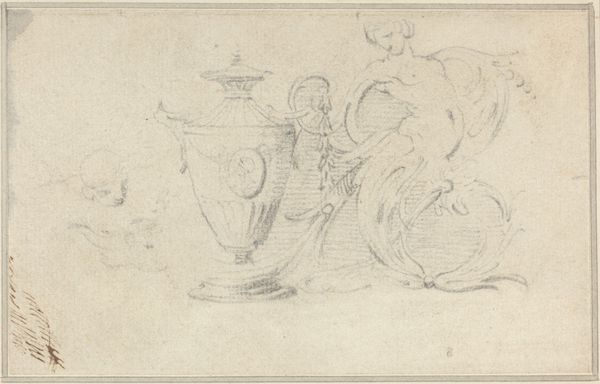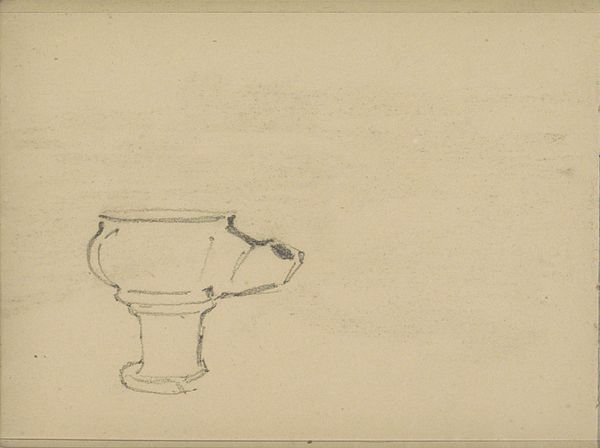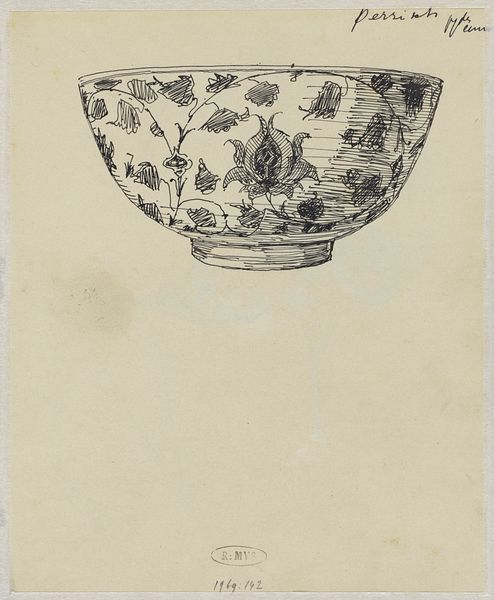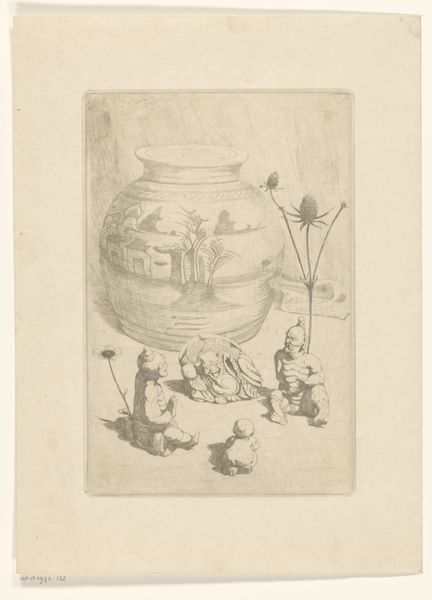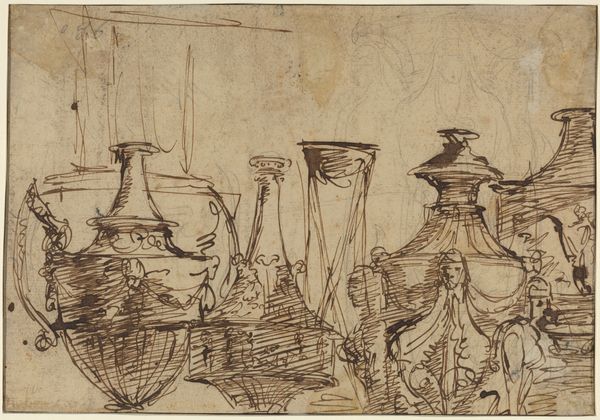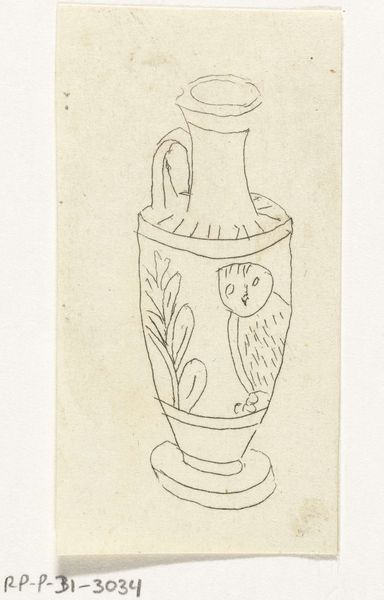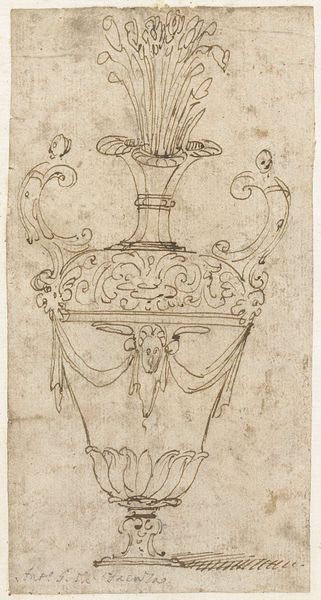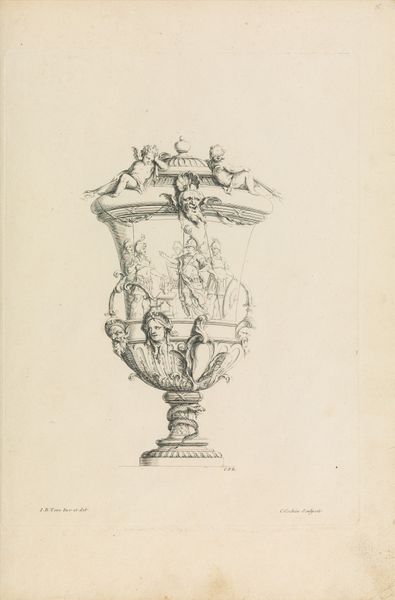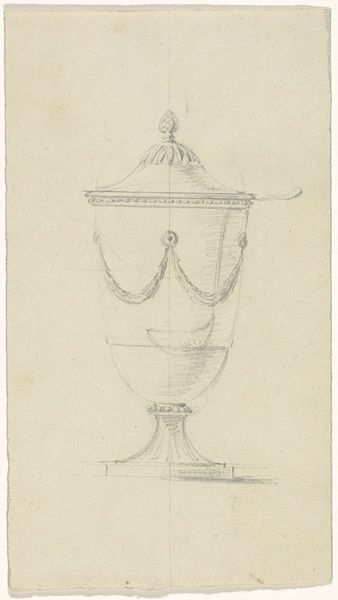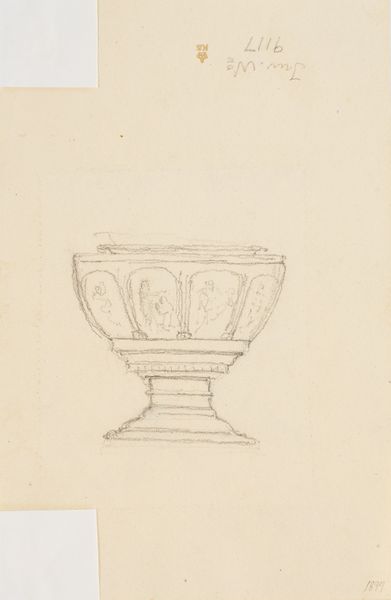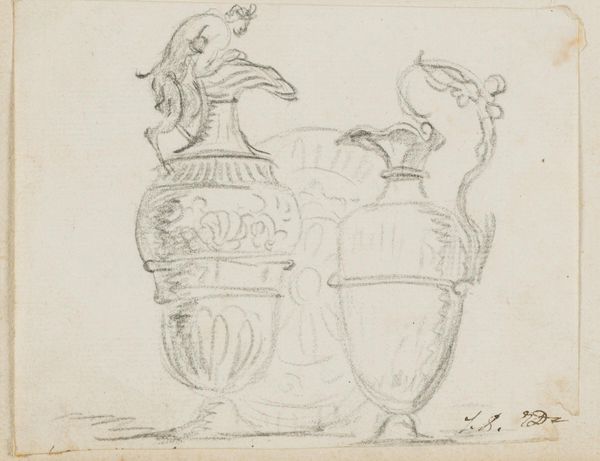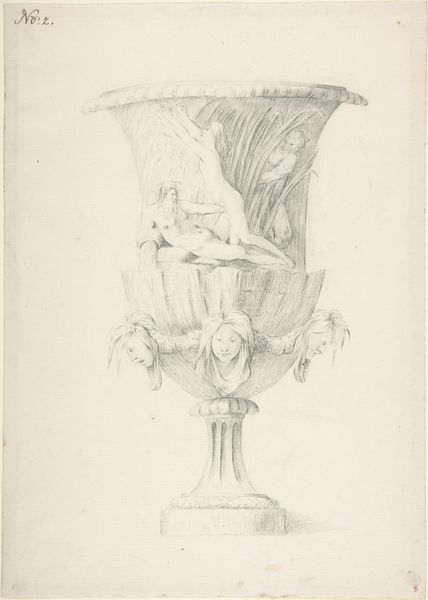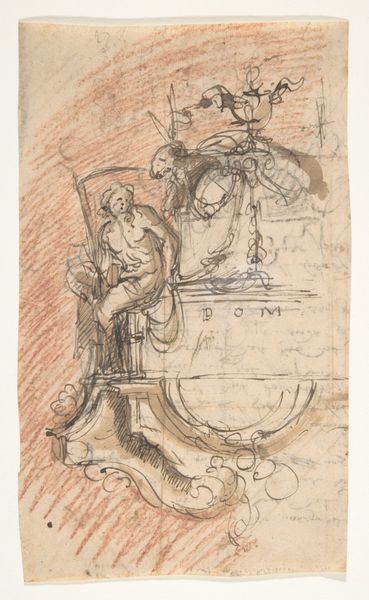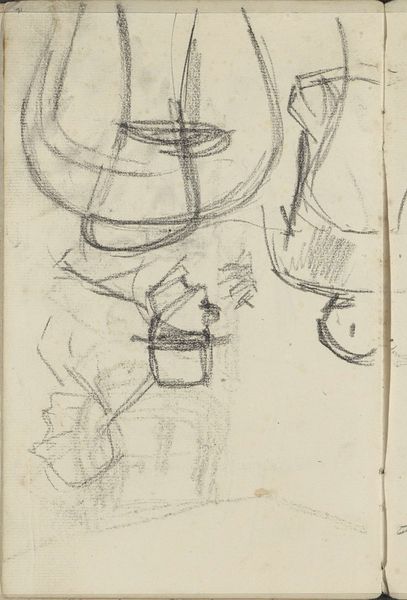
#
light pencil work
#
quirky sketch
#
shading to add clarity
#
pen sketch
#
personal sketchbook
#
ink drawing experimentation
#
pen-ink sketch
#
sketchbook drawing
#
sketchbook art
#
initial sketch
Dimensions: height 191 mm, width 122 mm, height 335 mm, width 230 mm
Copyright: Rijks Museum: Open Domain
Editor: Here we have "Kan met oor in de vorm van een figuur," a drawing by Gustave Joseph Chéret, dating from around 1870 to 1894. It's a quick sketch, seemingly done with pen and ink. I find the looseness of the lines really charming; it has an ephemeral, almost fleeting quality. What strikes you when you look at this? Curator: Immediately, I see a focus on the object itself—the pitcher. It’s not presented as some idealized, aesthetic object, but rather as something produced, almost industrially. Think about the late 19th century, the rise of mass production... Could this sketch be a preparatory study, not for 'high art,' but for something more functional, more accessible to a wider consuming public? Editor: That's a really interesting point! I hadn't considered the possibility that it was meant for mass production. I was stuck thinking about it as an art object. But how does the material aspect influence that? Curator: The medium, ink on paper, allows for quick reproduction and dissemination of design ideas. This contrasts sharply with the time and resources required for unique, handcrafted objects. Perhaps Chéret was exploring designs meant for transfer onto ceramics or glassware? The fluidity of the ink even hints at the flow of molten glass in a factory. Does that reshape how you see it? Editor: Absolutely! Seeing it as a potential design for something mass-produced changes everything. It's no longer just a sketch; it's a blueprint of sorts, reflecting the industrial processes of the time. Curator: Precisely. And by focusing on these material and production aspects, we start to understand how art was not separate from but deeply embedded in the rapidly changing social and economic landscape. Editor: So, by analyzing the materials and the potential production process, we gain insight into the cultural context and the blurring lines between art and industry during that era. I'll definitely look at sketches differently now! Curator: That's the power of examining the means of production. It allows us to uncover layers of meaning beyond just the aesthetic surface.
Comments
No comments
Be the first to comment and join the conversation on the ultimate creative platform.
